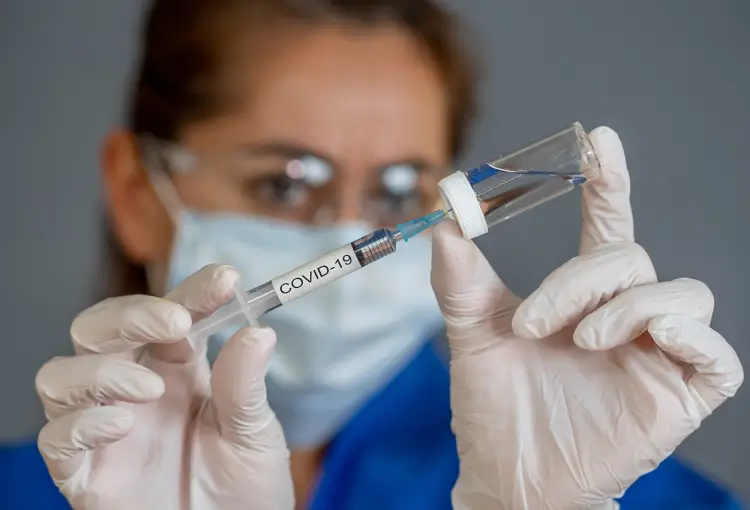
The UK’s Covid-19 vaccination roll-out has been a rare source of hope in the dark months of the pandemic, and it is thanks to the efforts of organisations such as the National Institute for Health Research (NIHR) that the AstraZeneca vaccine and others have made it to the clinic so quickly. By building an online registry for people willing to sign up for trials of Covid-19 vaccines, the NIHR – the government agency which funds research into health and care in the UK – was able to help accelerate the progress of drug candidates through clinical trials.

John Nother, the NIHR’s new chief digital officer, was the architect of the registry, which was built on the organisation’s new cloud-based digital hub. “It’s been hugely successful for us, and to date we’ve recruited almost 400,000 people who wanted to play their part in beating Covid-19,” he told Tech Monitor.
“We want to build on this work and create the same capability for all our research, so that we can speed up recruitment for trials and have a breadth of diversity into that recruitment. Ultimately that will result in better research outcomes.”
Developed by Nother and his team, the platform built last year was crucial to helping the UK “punch above its weight” on vaccine development, according to Justin Riordan-Jones, head of systems and information (research) at the Department of Health and Social Care.
“We were able to get many, many more volunteers to trials as a result of this work,” Riordan-Jones says. “So things like the AstraZeneca vaccine trial were up and running in days. The challenge is always getting the right people to the right place at the right time, and through John’s registry and the work of the vaccine task force, we were able to do that effectively.
“You’re seeing that now with the progress of our roll-out to date, compared to some other parts of the world.”
NIHR CDO: accelerating end-to-end research with tech
So far the NIHR has set up and coordinated more than 50 urgent public health studies into the effects of Covid-19, alongside its other work backing medical research across the UK. A virtual organisation, it is made up of many different divisions, dealing with funding for things such as drug discovery and trials, as well as grants which help individual scientists develop their expertise in specialised fields, and much more besides.
The distributed nature of the NIHR means good digital connectivity and smooth data sharing is vital, and the pandemic has given a clear demonstration of how the digital hub can support this. Based in the Google Cloud, it has been developed over several years and is used to coordinate research and help disparate teams of scientists find and share information quickly.

Nother, who took up his post as NIHR CDO in March 2020, was recruited to help make the most of these new digital capabilities. Having held senior digital roles with Asda and its parent company Walmart, he brings a different perspective to the NIHR’s work. He says the ultimate goal is to use cloud tools to “accelerate end-to-end research”, referring to the time between a research project being envisioned and funded, and it delivering meaningful outcomes for patients. His team is currently putting together a report recommending changes that could help speed up this process.
“I have a very retail-focused background, so the customer is key for me,” he says. “In terms of digital transformation, that means we’ve been looking at user journeys across the organisation, finding the pain points, and coming up with digital solutions to those pain points.
“That has involved breaking down every step from generating a research idea all the way through to disseminating it and looking at them separately.”
As well as boosting the NIHR’s capabilities, the move to the cloud has helped the organisation on an operational level. “The hub has given us a corporate identity, broken down barriers and given us the ability to operate across the organisation in a standard way,” Riordan-Jones says. “We just didn’t have that before – there was no standard for simple things like emails and video conferencing.”
Automating data and the promise of AI
Nother says a core priority has been to look at data flows, in particular how these can be automated and streamlined. Scientists are now able to use Google Cloud Search to trawl the vast repositories of data held by the organisation to find information to support their research, something which was previously tricky to navigate.
“Researchers knew the data existed, but getting access to it was frustrating,” Riordan-Jones explains. “We wanted to find a way of making all that information easily discoverable.”
A vast amount of data is produced across the NHS, and going forward the NIHR hopes to utilise analytics tools to ensure all this information is available to researchers in a secure but easily accessible format
“Fundamentally the NIHR is there to make people better, if not tomorrow then in five or ten years’ time,” Riordan-Jones adds. “We have a distinct advantage over other parts of the world because our integrated healthcare system [the NHS] means we have levels of data available that are unsurpassed elsewhere, which can be shared within what is a very strong data protection regime.”
Artificial intelligence is also likely to play a bigger role in the organisation’s work in future, and Riordan-Jones says it has seen an increase of funding requests in the area of AI from researchers – and that this enthusiasm is matched at Whitehall.
“There’s a recognition in government that AI and machine learning will be the future,” the NIHR CDO says. “Our job is to make sure we’re match-fit and ready to get involved in this area, so that when there are opportunities for us to work with companies in this space and break down barriers [between the research community and the private sector] we are able to take advantage of them.”






